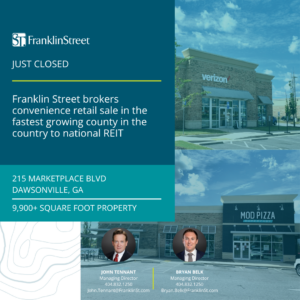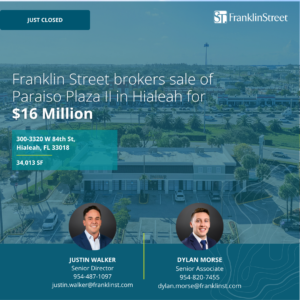The self-storage sector continues to fly under the radar while still proving profitable for investors.
When it comes to commercial real estate, it’s time for investors to think creatively.
Office buildings are becoming an increasingly unprofitable investment as the post-pandemic work culture has many companies offering work-from-home or hybrid options, dramatically reducing the need for an office footprint. Retail and multifamily projects often are complicated, involved and expensive. And industrial not only requires expansive land but is also nearing capacity in many markets.
But there’s one commercial asset class that tends to be overlooked but consistently offers sensible and profitable opportunities: self-storage.
An increasing number of savvy investors are discovering that self-storage has its place in a well-diversified commercial real estate portfolio. This asset class is known to be resilient to recessions, fast and inexpensive to build, highly flexible in its rent structure and “easy” to manage.
It’s also a business that is becoming more enmeshed in the fabric of our society. According to the “Self-Storage Demand Study” by the Self Storage Association, 11.1 percent of all American households use self-storage, a rate that’s been steadily growing over the past decade.
If you’re seeking to diversify a portfolio, or add self-storage to an existing property to densify a portfolio, know this about self-storage:
The expense ratio for self-storage is historically lower than most other asset classes. Self-storage facilities operate with minimal employees. A $10 million to $20 million facility is likely to be managed by one full-time employee overseeing administrative duties as a result of the remote and automated technologies available today.
Typically, a multifamily asset or office building of that size requires property managers, security personnel, maintenance employees and onsite office staff. With this structure, multifamily properties report a 40 to 50 percent expense ratio on average, while self-storage typically hovers at 30 to 37 percent, or even lower.
Self-storage is relatively inexpensive to build. Beginning with land, self-storage is a destination asset. Recent reports have indicated that a growing percentage of customers now identify self-storage solutions via the internet due to sophisticated SEO tactics. Therefore, high visibility is less of a factor, allowing the product to leverage less expensive dirt.
The facility itself doesn’t need a lot of space. Excess land within a multifamily complex, underutilized parking within the pad of a shopping center or simply a less-desirable lot may be ideal for self-storage and potentially more affordable.
Further, the self-storage build typically costs a fraction of other commercial real estate assets. It is also simple and inexpensive: a metal box with simple utility grids.
Self-storage can be retrofitted into vacant properties. Big-box retailers are closing or reducing the size of footprints. Office environments are turning into ghost towns. Vacant or obsolete warehouses are in the shadows of new, high-tech facilities. Property owners are increasingly seeking alternative uses for underutilized or dark real estate.
Many of these underperforming assets offer ideal platforms for self-storage for a minimal investment with relatively quick returns. While 70,000 to 100,000 square feet is the ideal fit for a self-storage conversion, smaller-scale facilities at 40,000 to 60,000 square feet are also profitable in tailored markets.
Self-storage offers adjustable monthly yields. Most commercial real estate products lock-in long-term leases with rental rates that can’t be adjusted until lease renewals. Self-storage offers the flexibility to regularly adjust rates to align with market influences.
Rental rates can be raised with a 30-day notice to the renter or lowered as needed to fit a market flush with product. This affords self-storage owners the ability to increase yields quickly or improve its competitive position to capture new business.
Self-storage is a less competitive asset class. But not for long. Compared to more popular, exciting asset classes such as mixed-use or multifamily, the self-storage category is still relatively uncrowded. An industry historically driven by the mom-and-pop business model, more than half of owners of self-storage properties own only one or two facilities.
This means less formidable competition for Institutional investors. Less competition creates more lucrative acquisition opportunities – whether with an existing facility or land for new development. But secrets don’t stay quiet for long. More teams are headed to the playing field, setting the stage for a crowded future. Simply put: pursue self-storage now.
Self-storage likes the heat. The Sun Belt, from Texas to Maryland, offers the most opportunity and growth for the self-storage sector. According to the Self Storage Association, the South reports the highest incidence of self-storage users (12 percent) than any other region in the United States.
Why? The region’s lower cost-of-living is driving the wealth migration from the Northeast, Chicago and the West. Populations in Southern towns are rapidly increasing, with new residential communities appearing (seemingly) overnight — with minimal headwinds to slow the growth.
Where there are people, there is a need for self-storage. Population growth fortifies self-storage as an asset class where rent increases are possible, but only as long as the market does not get oversaturated.
Self-storage profits are not automatic. While a self-storage facility can be run with minimal staffing, facilities that are actively managed, monitored and analyzed tend to deliver maximized profits. For instance, monitoring rents daily and adjusting as needed ensures a (nearly) 100 percent-rented facility at the highest rate a market will bear, resulting in the highest returns on investment. Likewise, as markets saturate, active marketing ensures brand awareness and recall among those seeking self-storage.
Self-storage is a deployable asset class with profit potential where many others may not. It is a reliable component of a diversified commercial real estate portfolio, as well as an exceptional companion to other property types such as multifamily, retail and office.
While self-storage continues to fly low, now may just be the best time to explore its viability within your portfolio or property.
By Franklin Street’s National Self-Storage Team of Frank DeSalvo and David Perlleshi




